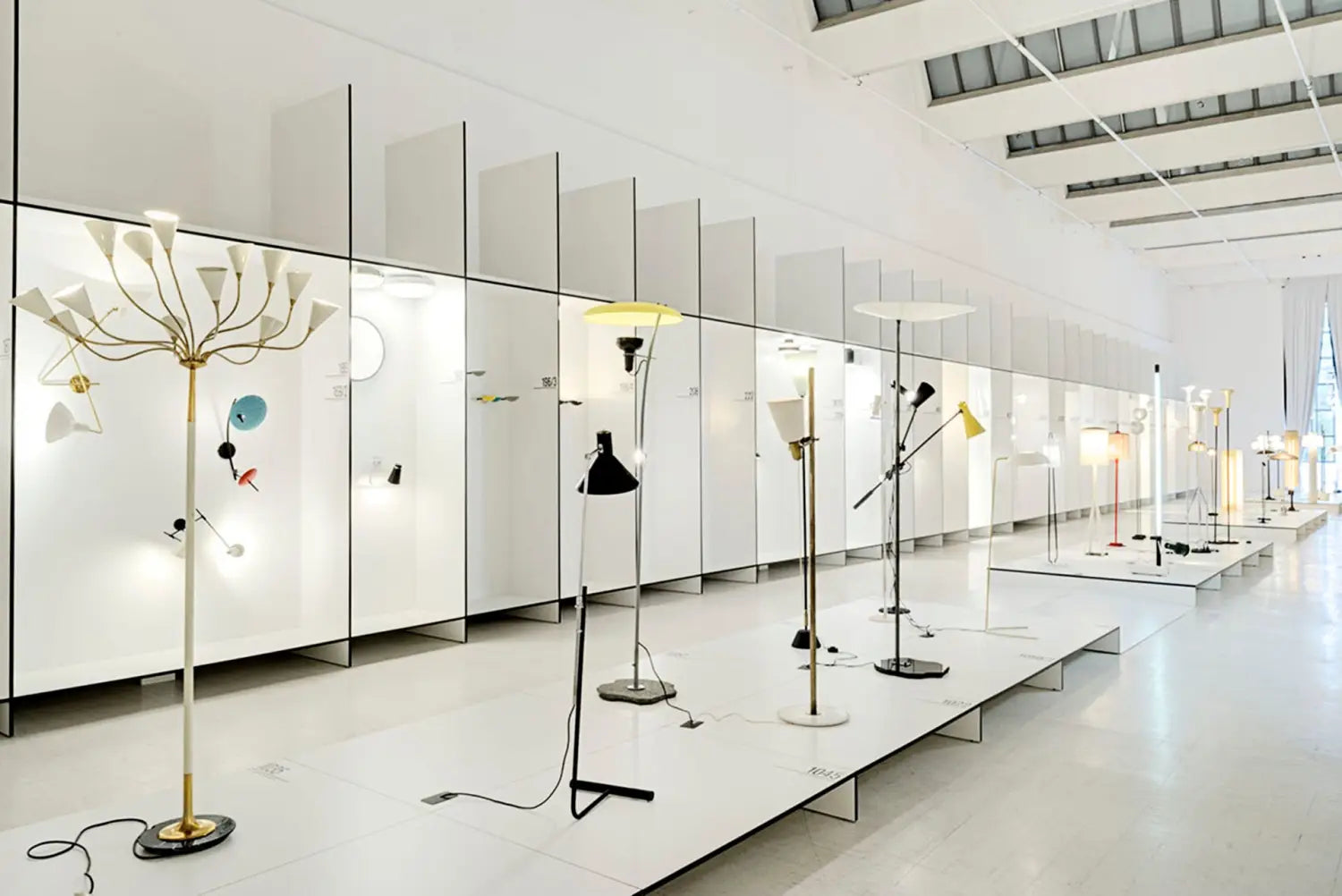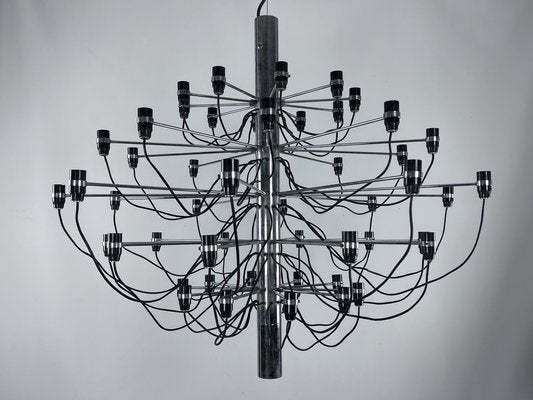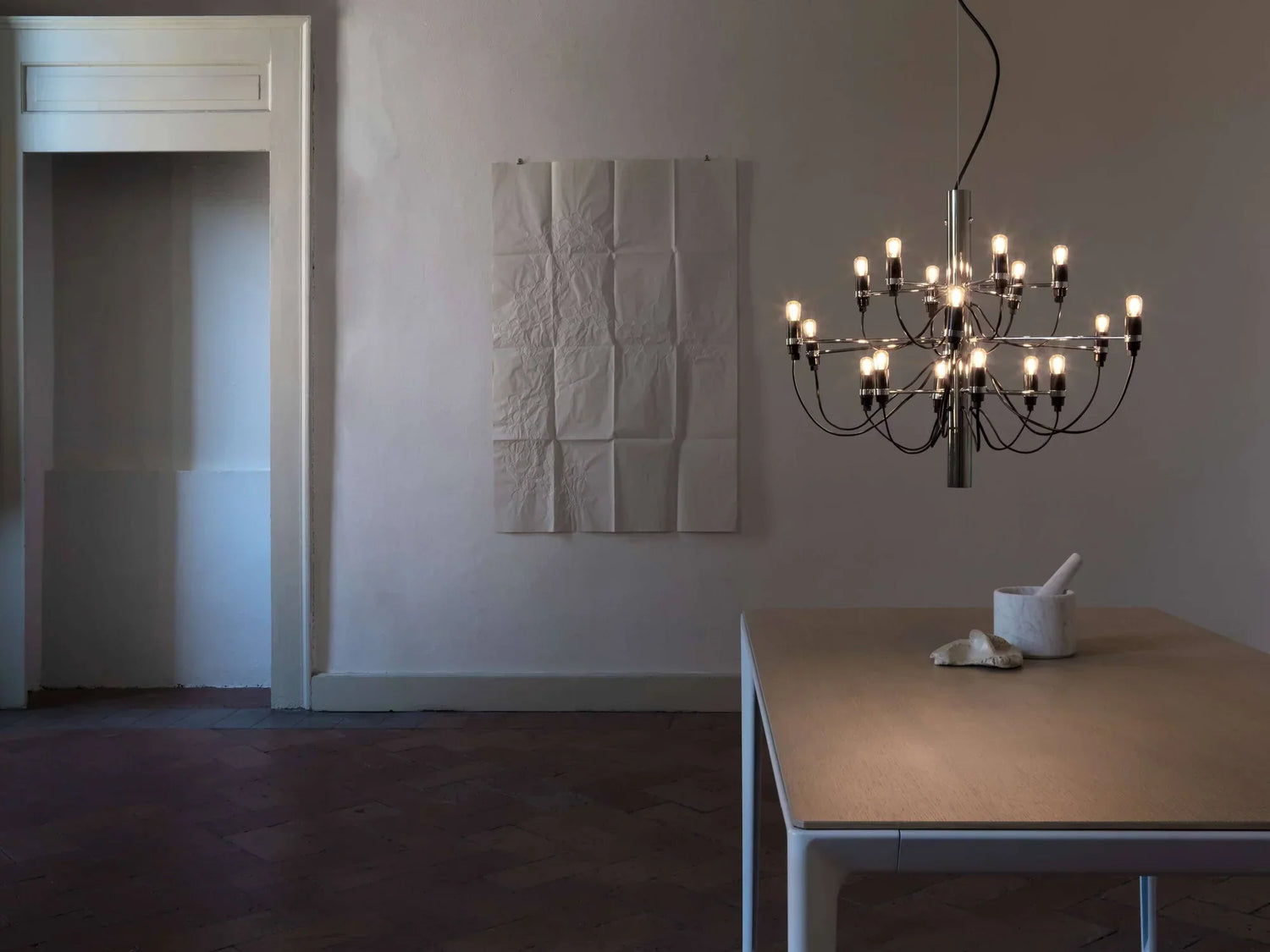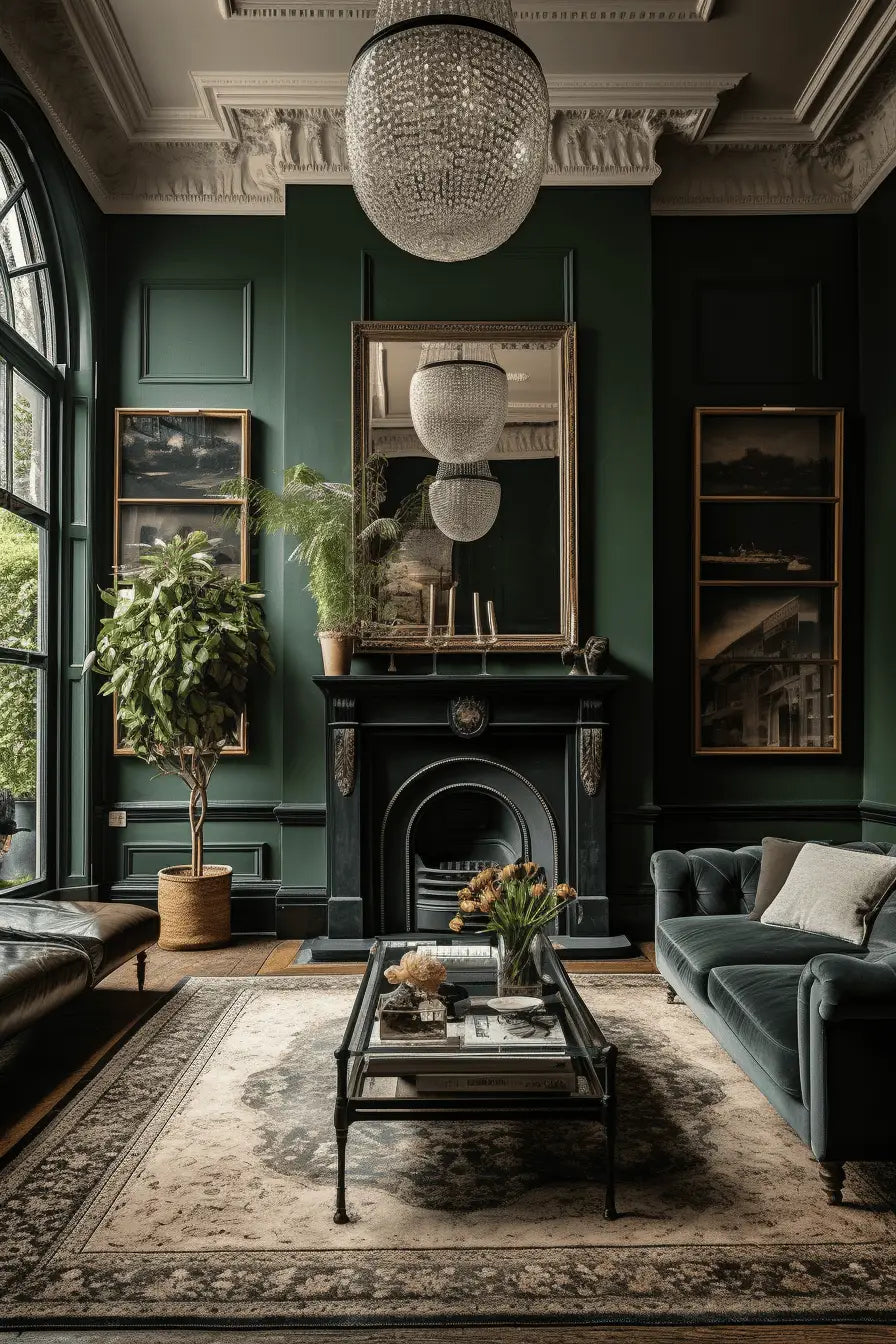Few names resonate in the world of lighting design as powerfully as Gino Sarfatti. Known as the pioneer of modern Italian lighting, Sarfatti’s vision transformed lamps and chandeliers into functional works of art. From the late 1930s to the 1970s, he revolutionized the relationship between light, space, and technology — leaving a legacy that continues to inspire architects and designers today.
The Birth of a Visionary
Born in Venice in 1912, Sarfatti began his career in engineering before turning his technical knowledge toward lighting. In 1939, he founded Arteluce, a company that became synonymous with avant-garde lighting in post-war Italy. His approach combined functionality, elegance, and innovation, which was groundbreaking at a time when lighting design often played a secondary role to furniture and architecture.

Innovations That Defined an Era
Sarafatti was not just a designer — he was an innovator. Over his career, he created more than 600 lighting models, introducing new technologies and exploring unusual materials such as Plexiglas, aluminum, and lacquered metals.
-
Modularity: His lamps often allowed flexible adjustments in form and function.
-
Minimalism: Clean lines and geometric shapes, decades before minimalism became mainstream.
-
New Light Sources: He was one of the first to experiment with halogen bulbs in domestic lighting.
These breakthroughs gave lighting an architectural presence, elevating it beyond decoration to a core part of interior design.
Iconic Designs
Among his most celebrated creations:
-
Model 2097 Chandelier (1958): An industrial yet elegant reinterpretation of the classic chandelier, still produced today.
-
Table Lamp Model 600 (1966): A sleek balance of form and function, often cited as the precursor of modern desk lamps.
-
Arteluce Wall Sconces: Experiments in geometry and reflection that pushed the boundaries of what light could do in a space.

A Lasting Influence
Sarfatti sold Arteluce to Flos in 1973, ensuring that his most important works continued to reach a global audience. Today, his designs are celebrated not just as functional lighting but as timeless icons of modernism. Collectors, museums, and interior designers continue to seek his work for its purity of design, innovative spirit, and sculptural presence.
For Casalola, Sarfatti’s legacy is a reminder that true luxury lies in design integrity, timeless elegance, and innovation that endures.
The story of Gino Sarfatti is more than design history — it is a testament to the power of vision. His ability to merge technology, form, and function still influences how we think about lighting today. For architects and designers, Sarfatti’s work remains not just relevant but essential.







Leave a comment
All comments are moderated before being published.
This site is protected by hCaptcha and the hCaptcha Privacy Policy and Terms of Service apply.